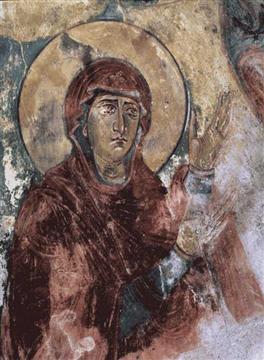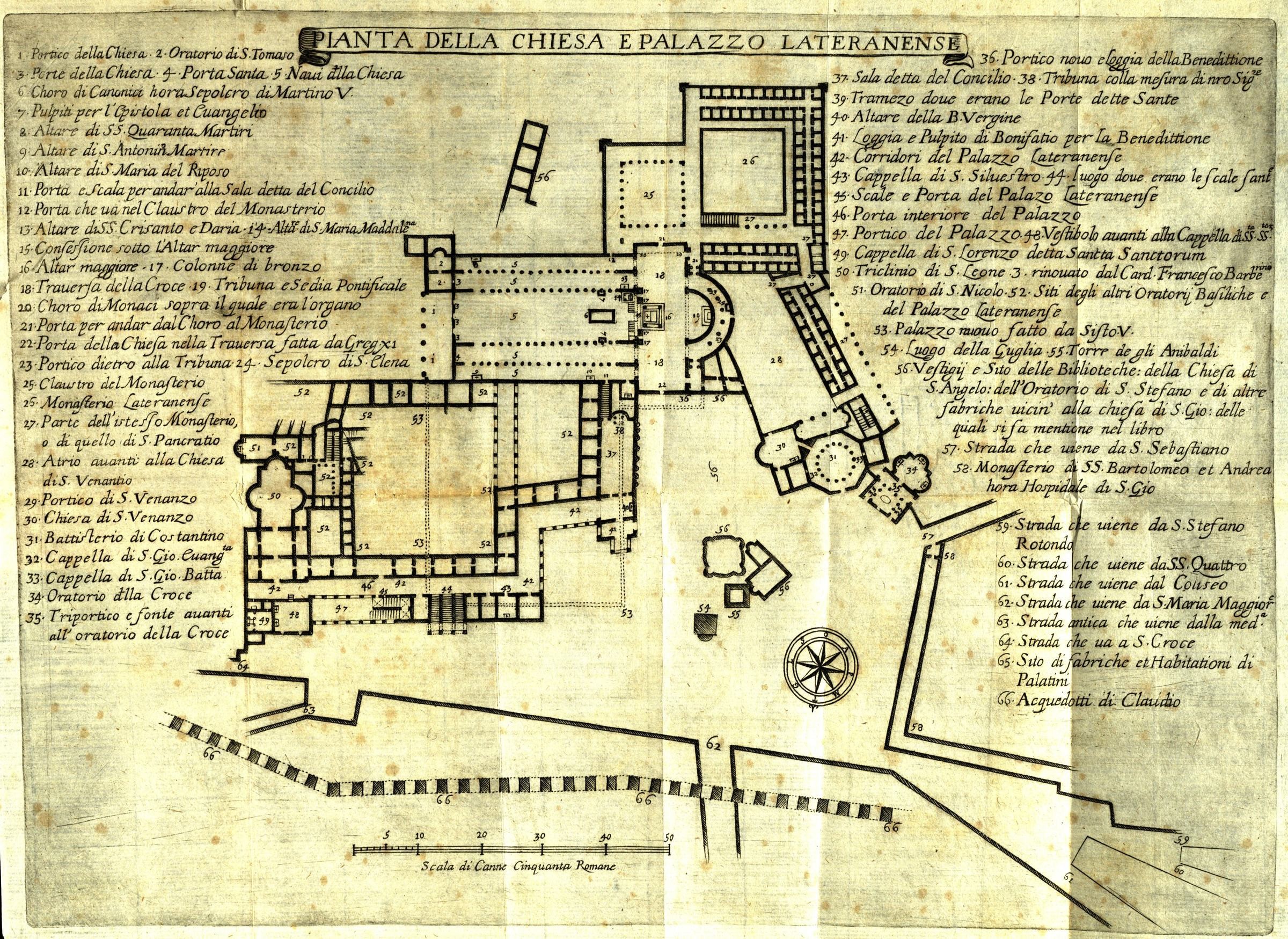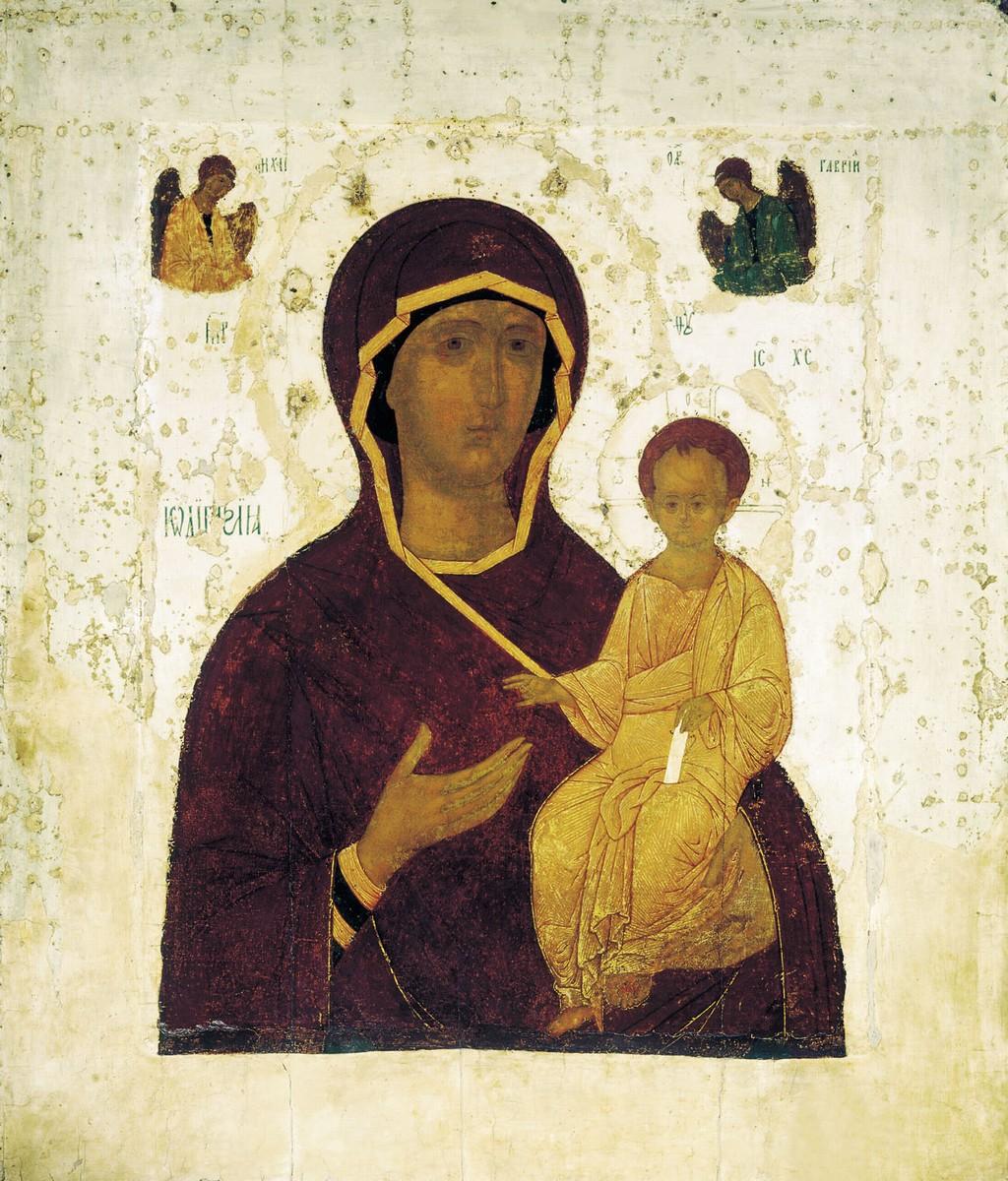|
Maria Advocata (Madonna Del Rosario)
The ''Madonna del Rosario'' is an icon of Mary, mother of Jesus, Mary commonly dated to the sixth century or earlier.Belting (tr. Jephcott) 1994, p. 315. It is an early version of a type of icon known as the ''Agiosoritissa'' or the ''Maria Advocata'', in which Mary is depicted without the Christ Child, with both hands raised. The work, which has been kept in the Madonna del Rosario (Rome), Church of the Madonna del Rosario since 1931, is thought to be the oldest image of Mary in Rome, Italy. Medieval tradition held that the icon was composed by Icon#Luke's portrait of Mary, Luke the Evangelist himself. The painting is known by various names. It is often simply called ''Maria Advocata'', since it was long the only example of the type in Rome. It has also been referred to according to the various churches where it has resided, as ''Madonna in Tempulo'', ''Madonna di San Sisto Vecchio, San Sisto'', ''Madonna di Santi Domenico e Sisto'', or, as it is called here, ''Madonna del Ros ... [...More Info...] [...Related Items...] OR: [Wikipedia] [Google] [Baidu] |
Madonna Advocata
The Panagia Agiosoritissa or Hagiosoritissa (Greek: Ἁγιοσορίτισσα) is the name for a type of Marian icon, showing Mary without child, slightly from the side with both hands raised in prayer. The type is known in Latin as Maria Advocata. Names The names used for the icon, ''Hagiosoritissa'' and, in Russian, ''Khalkopratiskaya'' (Халкопратийская), derive from the church of the Holy Urn (Greek: Ἁγία Σορός, in reference to the urn containing the Cincture of the Theotokos) in Constantinople's Chalkoprateia (Χαλκοπρατεῖα, "copper market") district. In English, the type is also known as ''Madonna Advocate'' (the prayer gesture interpreted as an act of intercession on behalf of the faithful). History The appellation Ἁγιοσορίτισσα is first recorded in Byzantine seals of the 11th century, and it appears minted on coins made under Manuel I Komnenos (). The type was widespread in the Byzantine empire and in the Balkans ... [...More Info...] [...Related Items...] OR: [Wikipedia] [Google] [Baidu] |
Fayum Mummy Portraits
Mummy portraits or Fayum mummy portraits are a type of naturalistic painted portrait on wooden boards attached to upper class mummies from Roman Egypt. They belong to the tradition of panel painting, one of the most highly regarded forms of art in the Classical world. The Fayum portraits are the only large body of art from that tradition to have survived. They were formerly, and incorrectly, called Coptic portraits. Mummy portraits have been found across Egypt, but are most common in the Faiyum Basin, particularly from Hawara and the Hadrianic Roman city Antinoopolis. "Faiyum portraits" is generally used as a stylistic, rather than a geographic, description. While painted cartonnage mummy cases date back to pharaonic times, the Faiyum mummy portraits were an innovation dating to the time of Roman rule in Egypt. The portraits date to the Imperial Roman era, from the late 1st century BC or the early 1st century AD onwards. It is not clear when their production ended, but rec ... [...More Info...] [...Related Items...] OR: [Wikipedia] [Google] [Baidu] |
Santa Francesca Romana, Rome
Santa Francesca Romana ( it, Basilica di Santa Francesca Romana), previously known as Santa Maria Nova, is a Roman Catholic church situated next to the Roman Forum in the rione Campitelli in Rome, Italy. History An oratory putatively was established in the eighth century under Pope Paul I in the portico of the former Temple of Venus and Roma. Tradition holds that at this site Saint Peter prayed at the site to challenge Simon Magus. According to this legend, Simon Magus wanted to prove his pagan powers were greater than those of the apostles, and started levitating in front of Peter. The apostle fell on his knees to prayer, asking God to demonstrate his pre-eminence, and Simon fell, dying. Tradition holds that the basalt stones where the apostle's knees during prayer are embedded in the wall of the south transept. A church at the site was known by the tenth century, was named ''Santa Maria Nova'' (or "Nuova", "New St Mary"), to distinguish it from the other church inside th ... [...More Info...] [...Related Items...] OR: [Wikipedia] [Google] [Baidu] |
Roman Forum
The Roman Forum, also known by its Latin name Forum Romanum ( it, Foro Romano), is a rectangular forum (plaza) surrounded by the ruins of several important ancient government buildings at the center of the city of Rome. Citizens of the ancient city referred to this space, originally a marketplace, as the ', or simply the '. For centuries the Forum was the center of day-to-day life in Rome: the site of triumphal processions and elections; the venue for public speeches, criminal trials, and gladiatorial matches; and the nucleus of commercial affairs. Here statues and monuments commemorated the city's great men. The teeming heart of ancient Rome, it has been called the most celebrated meeting place in the world, and in all history. Located in the small valley between the Palatine and Capitoline Hills, the Forum today is a sprawling ruin of architectural fragments and intermittent archaeological excavations attracting 4.5 million or more sightseers yearly. Many of the olde ... [...More Info...] [...Related Items...] OR: [Wikipedia] [Google] [Baidu] |
Sant'Adriano Al Foro
Sant'Adriano al Foro was a church in Rome, formerly in the Curia Julia in the '' Forum Romanum'' and a cardinal-deaconry (a titular church for a Cardinal-deacon). The church The Church of Sant'Adriano al Foro (Italian for St. (H)Adrian at the Roman Forum) was a conversion of the Curia Julia, which had housed the Senate of Ancient Rome, by Pope Honorius I in 630. The end of the sixth and the beginning of the seventh century mark for Rome a period of profound decay. The curia had been abandoned until Honorius decided to erect the church. Its name refers to the martyr Adrian of Nicomedia. Paintings are still visible in a side chapel which depict scenes from the life of St. Adrian; there are also some Byzantine paintings. It was designated by Pope Sergius I (687-701) as the starting point for the litanies during certain the procession liturgical feasts of the Virgin Mary, Presentation in the Temple, Annunciation, Assumption and Nativity. Pope Gregory IX made substantial change ... [...More Info...] [...Related Items...] OR: [Wikipedia] [Google] [Baidu] |
Via Sacra
The Via Sacra (, "''Sacred Street''") was the main street of ancient Rome, leading from the top of the Capitoline Hill, through some of the most important religious sites of the Forum (where it is the widest street), to the Colosseum. The road was part of the traditional route of the Roman Triumph that began on the outskirts of the city and proceeded through the Roman Forum. Later it was paved and during the reign of Nero it was lined with colonnades. The road provided the setting for many deeds and misdeeds of Rome's history, the solemn religious festivals, the magnificent triumphs of victorious generals, and the daily throng assembling in the Basilicas to chat, throw dice, engage in business, or secure justice. Many prostitutes lined the street as well, looking for potential customers. From the reign of Augustus, the Via Sacra played a role in the Apotheosis ceremony by which deceased Roman Emperors were formally deified. The body of the Emperor, concealed under a wax death ma ... [...More Info...] [...Related Items...] OR: [Wikipedia] [Google] [Baidu] |
Lateran Palace
The Lateran Palace ( la, Palatium Lateranense), formally the Apostolic Palace of the Lateran ( la, Palatium Apostolicum Lateranense), is an ancient palace of the Roman Empire and later the main papal residence in southeast Rome. Located on St. John's Square in Lateran on the Caelian Hill, the palace is adjacent to the Archbasilica of Saint John Lateran, the cathedral church of Rome. From the fourth century, the palace was the principal residence of the popes, and continued so for about a thousand years until the Apostolic Residence ultimately moved to the Vatican. The palace is now used by the Vatican Historical Museum, which illustrates the history of the Papal States. The palace also houses the offices of the Vicariate of Rome, as well as the residential apartments of the Cardinal Vicar, the pope's delegate for the daily administration of the diocese. Until 1970, the palace was also home to the important collections of the Lateran Museum, now dispersed among other parts of the ... [...More Info...] [...Related Items...] OR: [Wikipedia] [Google] [Baidu] |
Sancta Sanctorum (Lateran, Rome)
The Sancta Sanctorum ( it, Chiesa di San Lorenzo in Palatio ad Sancta Sanctorum) is a Roman Catholic chapel entered via the ''Scala Sancta'' (Holy Staircase) of the Lateran Palace in Rome. It was the original private chapel of the papacy before it moved to Avignon, and later to the Vatican Palace. The chapel is the only building from the old Lateran Palace that was not destroyed during its reconstruction. Name The chapel acquired the ''Sancta Sanctorum'' sometime in the ninth century. The spelling is ''Sancta'', the neuter plural form of the Latin adjective "holy": this is a reference to the multiple relics preserved there (i.e. "the most holy things") and to the Holy of Holies in Jerusalem, traditionally called in Latin both ''sanctum sanctorum'' (the singular form) or ''sancta sanctorum''. History The founder of the chapel is unknown. It was originally dedicated to Saint Lawrence, and served as the pope's private oratory until the Renaissance. It is located at the top of the S ... [...More Info...] [...Related Items...] OR: [Wikipedia] [Google] [Baidu] |
Acheiropoieta
''Acheiropoieta'' (Medieval Greek: , "made without hand"; singular ''acheiropoieton'') — also called icons made without hands (and variants) — are Christian icons which are said to have come into existence miraculously; not created by a human. Invariably these are images of Jesus or the Virgin Mary. The most notable examples that are credited by tradition among the faithful are, in the Eastern church, the Mandylion, also known as the Image of Edessa, and the Hodegetria, and several Russian icons, and in the West the Shroud of Turin, Veil of Veronica, Our Lady of Guadalupe, and the Manoppello Image. The term is also used of icons that are only regarded as normal human copies of a miraculously created original archetype. Although the most famous ''acheiropoieta'' today are mostly icons painted on wood panel, they exist in other media, such as mosaics, painted tile, and cloth. Ernst Kitzinger distinguished two types: "Either they are images believed to have been made by hands ... [...More Info...] [...Related Items...] OR: [Wikipedia] [Google] [Baidu] |
Assumption Of Mary
The Assumption of Mary is one of the four Marian dogmas of the Catholic Church. Pope Pius XII defined it in 1950 in his apostolic constitution ''Munificentissimus Deus'' as follows: We proclaim and define it to be a dogma revealed by God that the immaculate Mother of God, Mary ever virgin, when the course of her earthly life was finished, was taken up body and soul into the glory of heaven. The declaration was built upon the 1854 dogma of the Immaculate Conception of Mary, which declared that Mary was conceived free from original sin, and both have their foundation in the concept of Mary as the Mother of God. It leaves open the question of whether Mary died or whether she was raised to eternal life without bodily death. The equivalent belief (but not held as dogma) in the Eastern Orthodox Church is the Dormition of the Mother of God or the "Falling Asleep of the Mother of God". The word 'assumption' derives from the Latin word ''assūmptiō'' meaning "taking up". T ... [...More Info...] [...Related Items...] OR: [Wikipedia] [Google] [Baidu] |
Virgo (constellation)
Virgo is one of the constellations of the zodiac. Its name is Latin for maiden, and its old astronomical symbol is (♍︎). Lying between Leo (constellation), Leo to the west and Libra (constellation), Libra to the east, it is the second-largest constellation in the sky (after Hydra (constellation), Hydra) and the largest constellation in the zodiac. The ecliptic intersects the celestial equator within this constellation and Pisces (constellation), Pisces. Underlying these technical two definitions, the sun passes directly overhead of the equator, within this constellation, at the September equinox. Virgo can be easily found through its brightest star, Spica. Location Virgo is prominent in the spring sky in the Northern Hemisphere, visible all night in March and April. As the largest zodiac constellation, the Sun takes 44 days to pass through it, longer than any other. From 1990 and until 2062, this will take place from September 16 to October 30. It is located in the third ... [...More Info...] [...Related Items...] OR: [Wikipedia] [Google] [Baidu] |
Hodegetria
A Hodegetria , ; russian: Одиги́трия, Odigítria ; Romanian: Hodighitria, or Virgin Hodegetria, is an iconographic depiction of the Theotokos (Virgin Mary) holding the Child Jesus at her side while pointing to him as the source of salvation for humankind. The Virgin's head usually inclines towards the child, who raises his hand in a blessing gesture. In the Western Church this type of icon is sometimes called Our Lady of the Way. The most venerated icon of the Hodegetria type, regarded as the original, was displayed in the Monastery of the Panaghia Hodegetria in Constantinople, which was built specially to contain it. Unlike most later copies it showed the Theotokos standing full-length. It was said to have been brought back from the Holy Land by Eudocia, the wife of emperor Theodosius II (408–450), and to have been painted by Saint Luke the apostle himself. The icon was double-sided, with a crucifixion on the other side, and was "perhaps the most prominent ... [...More Info...] [...Related Items...] OR: [Wikipedia] [Google] [Baidu] |











